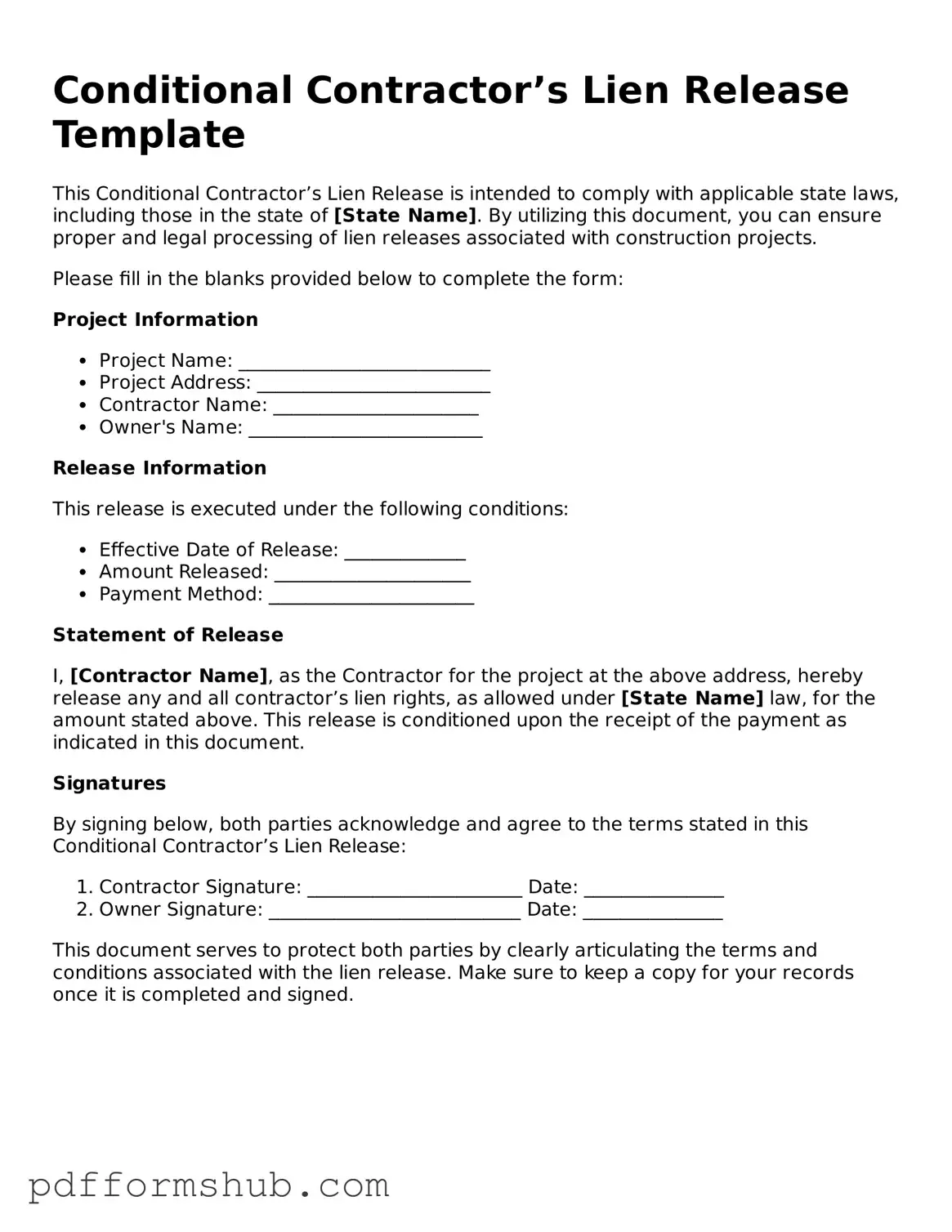The Conditional Contractor’s Lien Release form plays a crucial role in the construction industry, serving as a vital tool for contractors and property owners alike. This form is designed to protect the rights of contractors while ensuring that property owners are safeguarded from potential liens on their property. By using this form, contractors can release their claim to a lien conditionally, often contingent upon receiving payment for their work. This means that once payment is made, the contractor relinquishes any right to file a lien, providing peace of mind to property owners. The form typically includes essential details such as the parties involved, a description of the work performed, and the amount due. It also outlines the conditions under which the release is effective, making it clear when the contractor’s rights to a lien are waived. Understanding the intricacies of this form is essential for anyone involved in a construction project, as it helps facilitate smoother transactions and mitigates disputes over payments.
